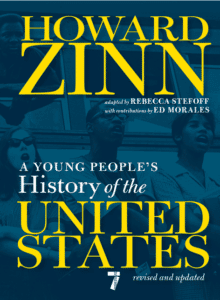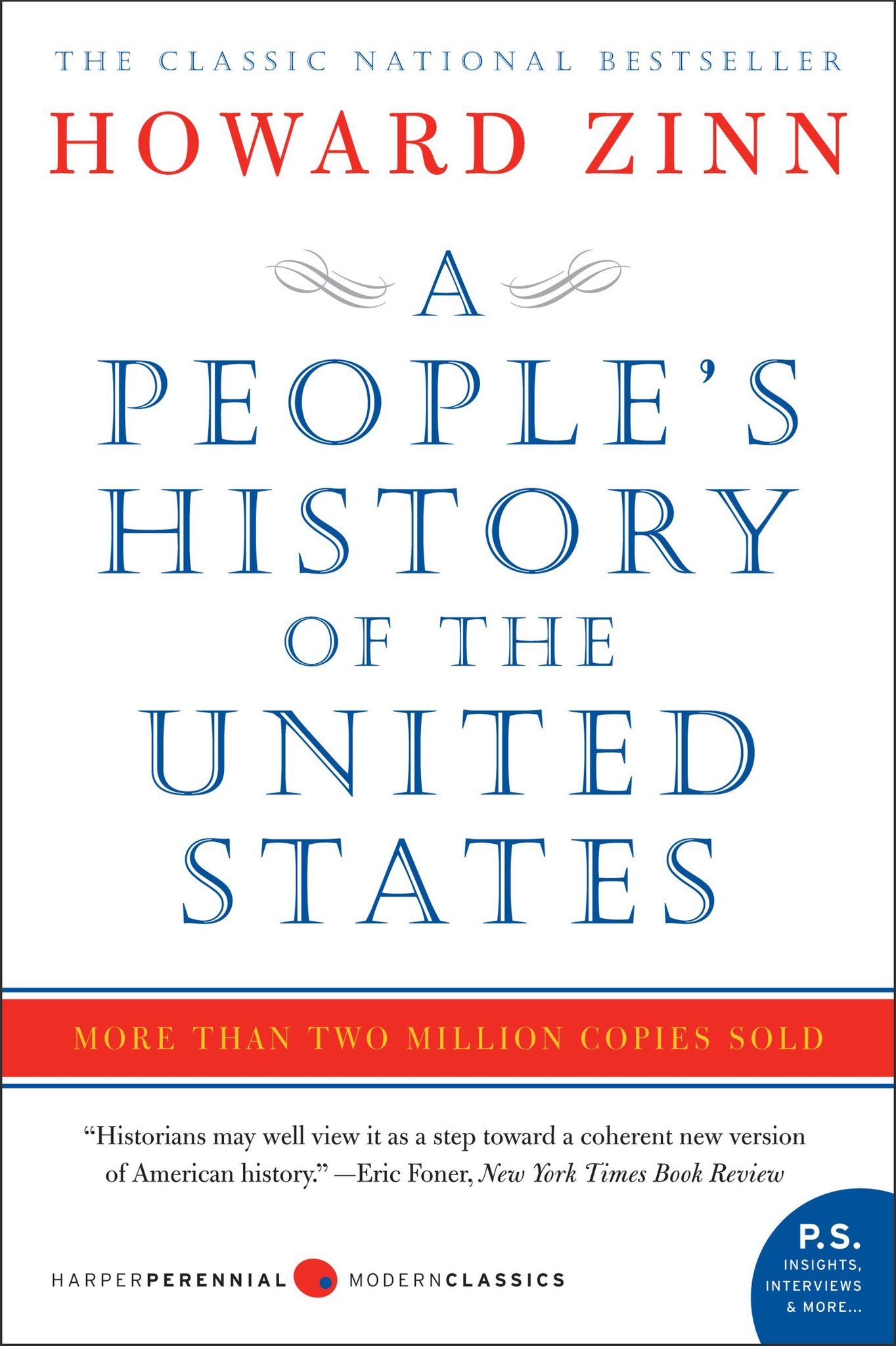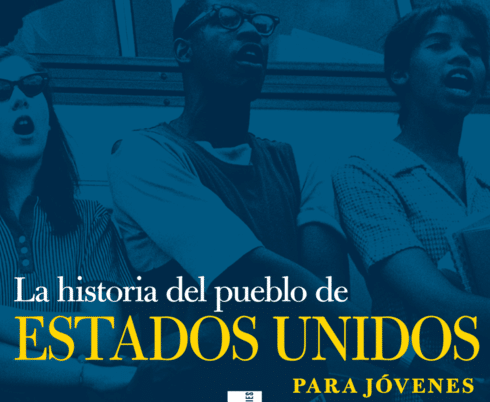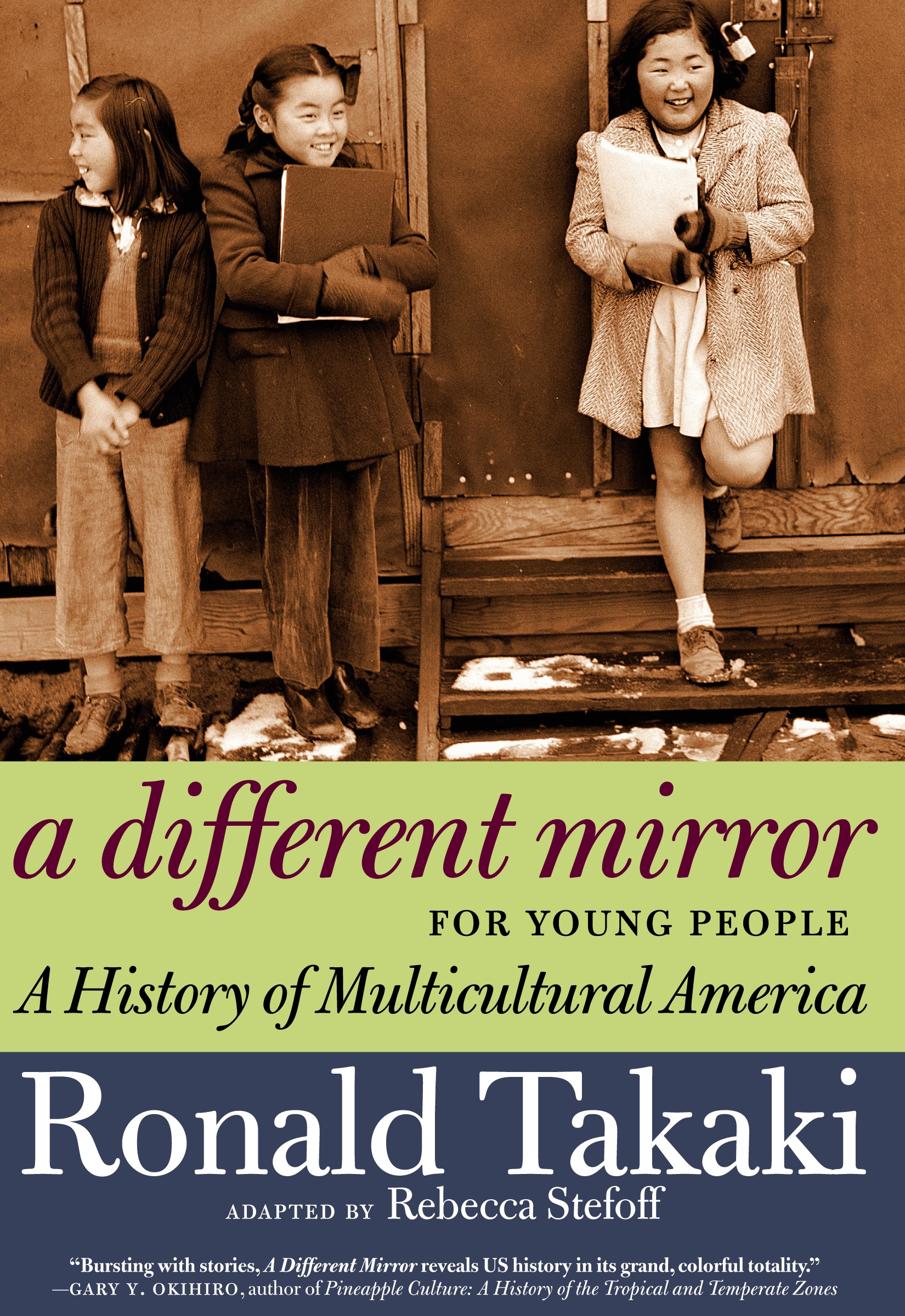 A Young People’s History of the United States brings to U.S. history the viewpoints of workers, enslaved people, immigrants, women, Black people, Latino Americans, Asian Americans, American Indians, and others whose stories, and their impact, are rarely included in textbooks.
A Young People’s History of the United States brings to U.S. history the viewpoints of workers, enslaved people, immigrants, women, Black people, Latino Americans, Asian Americans, American Indians, and others whose stories, and their impact, are rarely included in textbooks.
Beginning with a look at Christopher Columbus’s arrival through the eyes of the Arawak Indians, then leading the reader through the struggles for workers’ rights, women’s rights, and civil rights during the nineteenth and twentieth centuries, and ending with the current protests against continued U.S. imperialism. This book is ideal for 6th through 9th grade students. [Adapted from publisher’s description.]
ISBN: 9781644212509 | Seven Stories Press
Table of Contents
- A Note on this Edition
- Introduction
- Introduction by Ed Morales: A New Narrative
Part One
- Columbus and American Indians
- Black and White
- Who Were the Colonists?
- Tyranny is Tyranny
- Revolutions
- The Women of Early America
- As Long as Grass Grows or Water Runs
- War with Mexico
- Slavery and Emancipation
- The Other Civil War
- Robber Barons and Rebels
- The American Empire
Part Two
- Class Struggle
- World War I
- World War II and the Cold War
- Black Revolt and Civil Rights
- Vietnam
- Surprises
- The Latino Emergence
- Under Control?
- Politics as Usual
- Resistance
- The End of the Twentieth Century
- The “War on Terrorism”
- War in Iraq, Conflict at Home
- Our Voices Need to Be Heard
- Conclusion: “Rise Like Lions”
Teacher Quotes

I knew A Young People’s History of the United States book was working when students started to come into upper-level classes talking about Claudette Colvin before Rosa Parks was mentioned!
The book is very accessible to my students and it’s a great way to differentiate the class materials.
I adopted A Young People’s History of the United States as my primary textbook this year and my students love it! It fits especially well with my theme of resistance for the year. Already in the first few weeks of school they have learned how to be critical of the unified “us” and “we” narratives of the people that make up the United States found in more traditional textbooks, and they now reflexively ask for the larger story of anything they read.
Instead of marching through U.S. history from the “beginning” in 1492 to the current era, I have shaped my course by units, and the chapters in the A People’s History book allow me to jump around as needed to give them the information they need to understand each topic, but also how each topic or group of people ties into the others.
Using the book, and the materials at the Zinn Education Project website, the students are taking a hard look at what they’ve been taught, learning from voices they otherwise might not get to hear, and grasping a deeper level of the multiple “we’s” that make up US.
The combination of using student-led and inquiry discussions this year with A Young People’s History has changed the entire dynamic of humanities this year.
Students come to class bursting with questions and ideas to start discussions.
There has been a significant increase in engagement, motivation, connections to current events, and in general learning to question most everything, as well as history (something kids appreciate a lot).
A Young People’s History of the United States is a staple in our classroom. We take a look at the “discovery” of the Americas through the lens of those that were “discovered” and hold to account the colonizers who brought pain, suffering, and death to native populations. We learned that Columbus and his crew also used violence and brutality toward the Taíno people. They enslaved many Taíno men, women, and children, and, by some estimates, the Taíno population declined from millions to just a few thousand within a few decades of Columbus’ arrival.
By learning about events like wars, genocide, slavery, and oppression, young people can develop a greater appreciation for the struggles of those who came before them and the progress that has been made. Students need to know the “hard history” because, without it, our story is incomplete. It provides a sense of empathy for others who have experienced hardship and injustice, and can inspire young people to work towards a better, more equitable future for all. By confronting and acknowledging unpleasant parts of history, we can work towards reconciliation and healing and create a more just society.
Compton, California Teacher











I have read and discussed A Young People’s History of the United States with my boys, now ages 14 and 10, as part of our homeschooling journey. I consider it vitally important for my white boys to learn the non-whitewashed history of our country. They now better understand racial, social, and economic injustices in our country, why they exist, and where they originate. We discussed the many and varied ways to ensure that we don’t contribute to those injustices, and what we can do as individuals to help move our country away from injustices and toward equality, etc. My only regret is that didn’t learn about this book until recently!
I really wish there was a third version of the book like this that was more high school leveled. A People’s History is too much for average reader in the classroom and A Young People’s is too low. I would love to see a more middle approach for my general level students who could be slightly challenged but not have to either struggle too much or too little.
I made a study guide for this book. If you would like it, you can email me parkand@gmail.com
I really hope the error on page 143, referring to “Fort Sumter, North Carolina” has been corrected.
Zinn is sometimes used in lessons from Reading Like a Historian (http://sheg.stanford.edu/rlh), along views that may contrast or take a different point of view — a good way to challenge kids to think for themselves. Zinn tends to resonate with students – almost all of mine have asked for copies of the book — wish I could give it to each of them! I teach 8th grade.
I would love to know if anyone has written study guides or even lesson plans for this book. I want to teach this to my 11 year old son and would love some help.
~StarWolf
Does anyone know if anyone has developed study guides for this book?